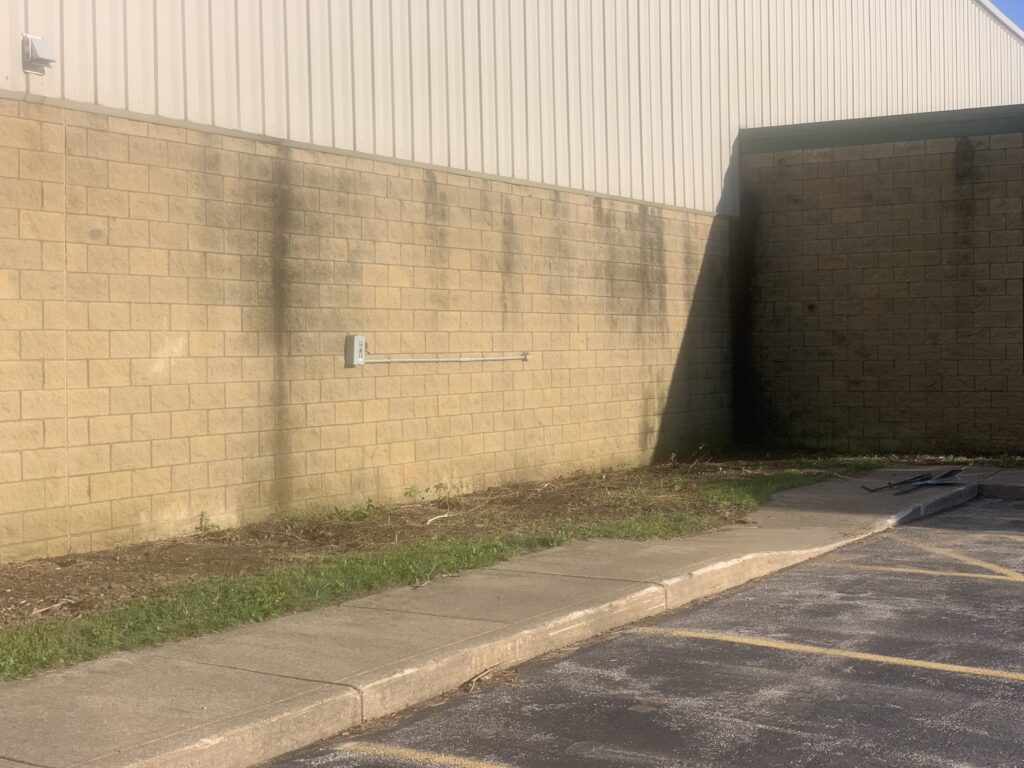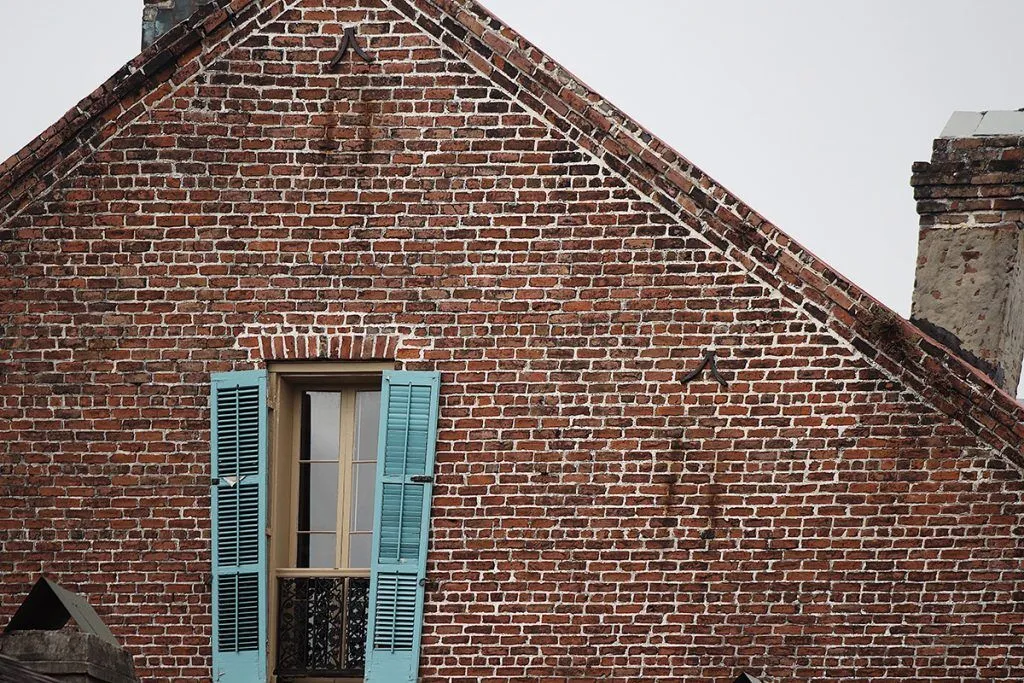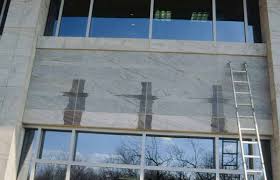
In urban environments, buildings face constant exposure to various pollutants. This exposure results in visible pollution stains, carbon buildup, and other forms of atmospheric contamination. Over time, these pollutants not only diminish the aesthetic appeal of buildings but also compromise their structural integrity, posing risks to the longevity and safety of both historical and modern structures. This article examines the sources and types of contaminants that affect buildings, explores their effects on different materials, and discusses how professional building washing can mitigate these impacts. We’ll also review specific manufacturer recommendations for building washing and look at case studies illustrating the success of these methods.
1. Origins and Types of Building Contaminants
Urban pollutants derive from multiple sources and differ in their chemical composition, making them challenging to remove. Key pollutants impacting buildings include:
Particulate Matter (PM)
Particulate matter, which consists of small particles from vehicle emissions, construction activities, and industrial processes, is a leading cause of discoloration in urban areas. These particles are often less than 10 microns in diameter and can penetrate porous materials such as brick and limestone, causing stains that are difficult to remove without professional cleaning.
Carbon-based Pollutants (Soot and Smoke Residues)
Soot from incomplete combustion of fossil fuels, particularly in areas with high traffic or near industrial zones, accumulates on building surfaces, giving them a dark and aged appearance. This carbon buildup can chemically bond with surfaces, especially in areas with high humidity, making it resilient to basic cleaning efforts.
Acidic Gases: Sulfur Dioxide (SO₂) and Nitrogen Oxides (NOₓ)
Acidic gases react with water vapor in the atmosphere to form sulfuric and nitric acid, which precipitates as acid rain. When acid rain contacts materials such as marble, sandstone, or concrete, it causes significant chemical degradation. Studies by the National Park Service highlight that acid deposition can penetrate deeply into surfaces, causing etching and weakening the material’s structure over time.
VOCs and Ozone (O₃)
Volatile organic compounds (VOCs) and ozone, while less visible, can exacerbate staining and facilitate the growth of harmful microbial organisms on building surfaces. These pollutants are common in urban settings and have a particularly detrimental effect on painted and synthetic surfaces, causing color fading and surface degradation.
Atmospheric Dust and Dirt
Wind and weather patterns carry natural dust particles that adhere to building surfaces, especially in regions with high winds or frequent storms. While atmospheric dust may seem less harmful, it creates a layer that traps pollutants, forming a sticky surface that promotes microbial growth and attracts further pollutants.
2. Effects of Atmospheric Pollutants on Building Materials
Different building materials react to pollutants in unique ways, depending on their composition and porosity.
Stone (Marble, Limestone, Sandstone)
Stone surfaces, especially porous ones like limestone and marble, are highly susceptible to acid rain. As acidic pollutants settle and react with the surface, they dissolve calcium carbonate, a primary component in many stones, leading to visible pitting, flaking, and structural degradation.
Concrete and Cement
Concrete is resilient yet vulnerable to chemical reactions caused by acidic gases and moisture. Over time, carbon buildup, combined with pollutants such as NOₓ and SO₂, leads to a phenomenon known as “concrete carbonation.” This process decreases the pH level within concrete, causing it to lose its protective alkalinity, which can lead to internal steel corrosion and cracking.
Brick and Terracotta
Brick, a durable material, is commonly used in urban construction. However, pollutants can penetrate the tiny pores in brick surfaces, making stains difficult to remove and accelerating material degradation. Acid rain and other contaminants can cause bricks to become brittle, while organic growth like algae and lichen further exacerbates deterioration.
Metals (Steel, Copper, Bronze)
Metals used in building construction are particularly susceptible to corrosion from pollutants. Acid rain corrodes steel and iron, resulting in rust and compromising structural integrity. For decorative metals such as copper and bronze, pollutants lead to tarnishing and patina formation, which can be visually unappealing.

3. The Importance of Building Washing
Building washing is a critical component of maintaining structures in polluted environments. It’s especially important in cities where pollutant levels are high and building exteriors are more frequently exposed to harmful contaminants.
Aesthetic Restoration
Professional washing removes pollution stains, restoring the building’s original look. This is especially valuable for commercial buildings, where curb appeal can significantly impact customer perception, and for historical buildings, where preserving original beauty is a priority.
Material Preservation and Longevity
When pollutants are removed regularly, there is less opportunity for long-term damage to accumulate. For example, washing a limestone building regularly prevents acidic pollutants from reacting with the stone and causing irreversible damage. By removing pollutants, building washing mitigates material wear and prolongs the lifespan of a building’s exterior.
Preventing Health Risks
Regular building washing removes algae, mold, and other microbial growth that can contribute to poor air quality. According to the Centers for Disease Control and Prevention (CDC), mold spores from contaminated buildings can lead to respiratory problems in individuals exposed to them over time.
Improving Building Energy Efficiency
A clean exterior can positively impact a building’s thermal performance. Pollution buildup and algae growth absorb moisture and increase surface roughness, which can retain heat and make HVAC systems work harder, especially in humid environments. Building washing reduces such impacts, helping to improve overall energy efficiency.
4. Recommended Methods for Effective Building Washing
Choosing the right cleaning method is essential for preventing damage and achieving optimal results.
Pressure Washing
For hard surfaces, such as concrete and brick, pressure washing is a highly effective method. By using high-pressure water, professionals can remove carbon buildup, dirt, and biological contaminants. The International Masonry Institute suggests limiting pressure to between 400 and 800 psi to avoid damaging brick, and recommends even lower settings for softer stones.
Soft Washing
Soft washing is ideal for delicate surfaces like stucco, limestone, and painted surfaces. This method combines low-pressure water with specialized cleaning agents to effectively remove grime without damaging the surface. Soft washing is particularly effective for buildings with high amounts of microbial growth, as the cleaning agents used are often formulated to prevent future growth.
Chemical Cleaning Solutions
In cases where pollution has penetrated deeply into the building material, manufacturers recommend specialized chemical cleaning agents. For example, Prosoco offers neutral pH cleaners designed to remove carbon buildup and organic stains from a range of surfaces. Using these solutions requires careful application, as improper use can result in surface discoloration.
Laser Cleaning for Historic Buildings
Laser cleaning is an emerging technology used on delicate, historic buildings. This technique uses laser pulses to vaporize contaminants without impacting the underlying material. It is effective for intricate stonework and areas where abrasive methods might cause damage. Laser cleaning has been successfully used on landmarks such as the Cathedral of Notre-Dame in Paris.
5. Manufacturer Recommendations and Best Practices
Manufacturers of building materials and cleaning solutions offer specific recommendations for maintaining their products in polluted environments. Key recommendations include:
Routine Cleaning Schedule
Manufacturers often suggest a cleaning schedule based on a building’s location and exposure. In high-pollution areas, quarterly washing is advised, while biannual washing may suffice in less exposed regions. A regular schedule helps prevent pollutants from embedding deeply into materials.
Use of Environmentally Safe Cleaners
Manufacturers like DuPont and Prosoco emphasize using biodegradable, environmentally safe cleaners to minimize the risk of toxic runoff. Many professional cleaning companies adhere to EPA standards, which protect local ecosystems from harmful cleaning agents.
Application of Surface Sealants
Sealants, particularly those formulated for porous materials, create a protective barrier against pollutants and moisture. After washing, manufacturers recommend applying sealants to reduce future staining and make subsequent cleanings easier. Sealants can be especially effective on stone, concrete, and brick.
Testing on Inconspicuous Areas
Before full-scale washing, testing cleaning solutions and methods on a small area is recommended to ensure compatibility. This is particularly crucial for historical buildings with fragile materials.

6. Case Studies: Real-World Applications of Building Washing
Examining how professional cleaning and maintenance have impacted prominent buildings worldwide offers insight into the practical benefits of these methods.
St. Paul’s Cathedral, London, UK
London’s St. Paul’s Cathedral, constructed primarily from Portland limestone, has been subjected to heavy pollution. Regular soft washing and chemical treatments have preserved its iconic white façade, maintaining its appearance and structural integrity over centuries.
The Acropolis, Athens, Greece
The Acropolis has endured pollution damage from heavy urban and industrial activity in Athens. To combat this, experts used laser cleaning to remove pollution stains and organic matter from the Parthenon’s marble columns. This non-invasive approach has preserved the historical stone without causing micro-cracks.
Empire State Building, New York, USA
New York City’s Empire State Building, constantly exposed to urban pollutants, undergoes routine pressure washing to prevent carbon buildup and maintain its iconic appearance. This cleaning, combined with environmentally friendly chemicals, ensures both aesthetics and sustainability.
Conclusion
Pollution, carbon buildup, and other atmospheric effects pose significant risks to buildings, affecting both appearance and structural durability. Professional building washing, tailored to material types and aligned with manufacturers’ guidelines, can mitigate these effects and extend the life of urban structures. By implementing regular maintenance and using advanced cleaning technologies, we can preserve the architectural beauty of our cities and safeguard historical landmarks for future generations.
